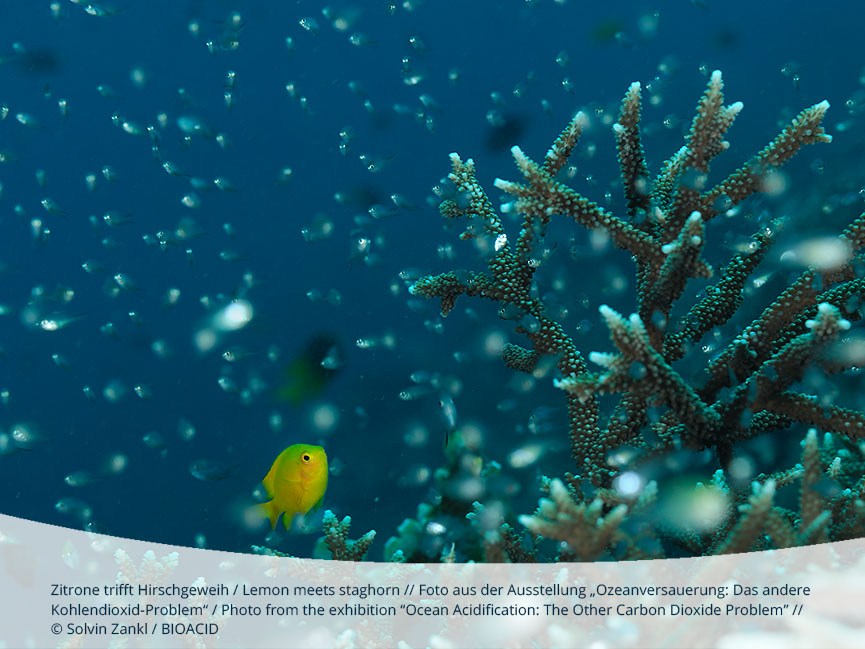
Tropical corals
All tropical coral reefs taken together cover just one per cent of the ocean – but they are home to a quarter of all marine organisms. Up to two million different plants and animals exist in and around the reefs. A biodiversity as high as this can only be found in the tropical rainforest.
Many people believe that the submarine oases need to be protected just because of amazing variety and beauty. But they also have an economic value: Many fish species use the reefs as nurseries. The fishing industry depends on those stocks, and often, reef fisheries are the only source of income for local communities. Other creatures in the reefs produce substances which may be relevant in the development of medicines. Reefs form a natural barrier against high waves and protect coasts in storms. Finally, in many regions, such as the Florida Keys or in Australia, they are a tourism magnet.
The number one enemy of tropical corals is global warming – also a consequence of carbon dioxide emissions. If water temperatures rise more than 1.5 degrees Celsius, many reefs will be destroyed even more than today.
2016 witnessed the third and longest and most severe coral bleaching ever observed: Tropical coral get a large proportion of their energy from a symbiosis with photosynthesizing singe-celled algae living in their tissue. These zooxanthellae also make corals shine in bright colours. However, under increased water temperatures, the algae become toxic to their host. They are repelled – and what remains is the ghostly white skeleton of the coral.
Fleshy macroalgae can easily and quickly overgrow corals that are weakened like this: They thrive better under higher temperatures and use additional carbon dioxide to increase their photosynthesis. As soon as they have started ruling the reef, the corals can hardly recover. Other species find less shelter in reefs dominated by algae.
Stony corals, which form the basis of each colourful reef grow their solid skeletons from aragonite, the more soluble form of calcium carbonate. Like their cold-water relatives, they need a certain supply of carbonate ions in the seawater for their calcification. Also coralline algae, which contribute to the formation of reefs, too, need these molecules.
In more acidic water, the two habitat former grow more slowly – under extreme conditions more slowly than the reef erodes. In addition, their skeletons remain more sensitive and thus more susceptible to storms or for organisms that burrow inside the coral or attacking its calcium carbonate structure.
Only very few coral, for example the Porites phylum is able to withstand climate change. Studies on reefs that exist at natural carbon dioxide seeps in Papua New Guinea show that Porites corals are able to maintain their inner pH at a level that allows them to calcify in more acidic water. Whether they will also succeed when acidification and rising temperatures put them under stress at the same time, is still unexplored.
LEARN MORE: What is ocean acidification? // Acidification in the Arctic // Plankton // Cold-water corals // Society impacts